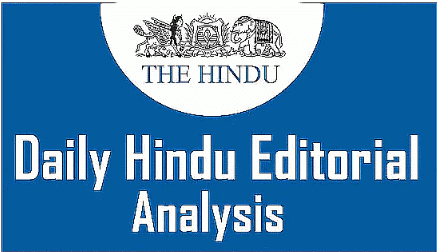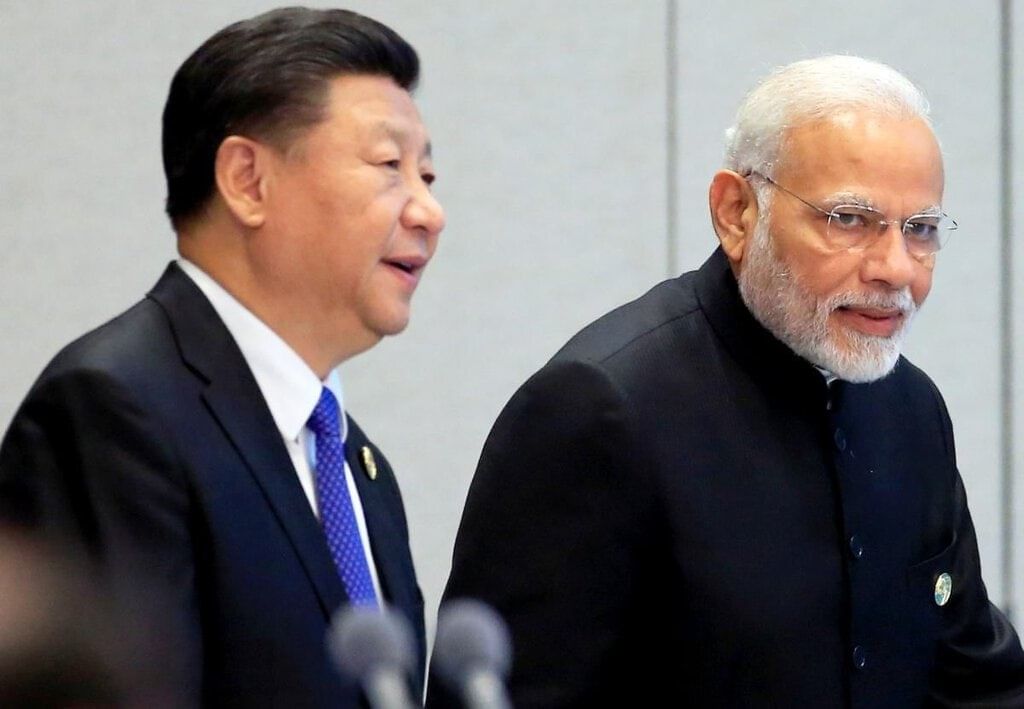UPSC Exam > UPSC Notes > Current Affairs & Hindu Analysis: Daily, Weekly & Monthly > The Hindu Editorial Analysis- 25th December 2024
The Hindu Editorial Analysis- 25th December 2024 | Current Affairs & Hindu Analysis: Daily, Weekly & Monthly - UPSC PDF Download

An India-China reset needs bold and new thinking
Why in News?
Cynical practitioners of ‘realpolitik’ who argue that idealism has no place in diplomacy, should not be allowed to hijack the India-China discourse.
Introduction
- The main quality of mature leaders is their ability to handle disagreements peacefully and prevent them from growing into larger conflicts.
- Even when old disputes arise, these leaders strive to calm tensions through open discussions to avoid escalating issues.
- In this context, Prime Minister Narendra Modi of India and President Xi Jinping of China have shown commendable maturity.
- A military standoff between India and China, which began after a violent clash in the Galwan Valley in June 2020, has come to an end.
- This resolution was made possible by the strong political support from both leaders for a disengagement agreement.
- The agreement followed a series of careful discussions involving military and diplomatic representatives from both nations.

Shun hostility, pursue cooperation
- Strategic Determination: Will they choose to steadily advance India-China relations towards comprehensive and mutually beneficial cooperation?
- Mutual Distrust: Or will they let the existing mutual distrust pull their relationship back to minimal cooperation and more rivalry?
- Military Clashes: Following the second option could lead to future military clashes, especially since the ongoing boundary dispute remains unresolved.
- Line of Actual Control: Any new conflict, whether large or small, would disrupt peace along the Line of Actual Control, which is essential for bilateral cooperation to thrive.
- Geopolitical Turbulence: In a world filled with increasing geopolitical turbulence and uncertainty, ongoing hostility between India and China will add to global problems.
- Mutual Gains: Conversely, cooperation could lead to significant mutual gains and contribute to a safer and better world.
- Strategic Choice: This is the critical choice that Mr. Modi and Mr. Xi will need to make.
- Bold Thinking: Making the right decision requires bold new thinking from both New Delhi and Beijing.
- Honest Effort: Achieving this is only possible if both sides make a genuine effort to eliminate the mutual apprehension that one is undermining the other's core interests.
China's Actions for Trust Building
- National security: China needs to clearly show India that it is not a danger to its national security, both now and in the future, whether on its own or with its close ally, Pakistan.
- Pakistan-sponsored terrorism: China's reluctance to openly condemn terrorism supported by Pakistan in Kashmir and other parts of India has led many Indians to see China as an unfriendly nation.
- Contain India’s rise: China should avoid actions that make India feel like it is trying to limit India’s growth and influence in Asia and globally.
- UN Security Council: As proof of its intentions, China should strongly support India's inclusion as a permanent member of the United Nations Security Council, now that India is the most populous country in the world.
- Equal pole: Beijing must treat India as an equal partner in a multipolar Asia and a multipolar world, understanding that India will never accept being less important than any other country, including China.
India's Actions for Trust Building
- Power asymmetry: India should not be misled by the false idea of a “power asymmetry” between itself and China. Instead, India should collaborate with the United States to strengthen its own position, possibly through confrontational actions like participating in the Quad.
- Quad: The Quad, which includes India, Japan, Australia, and the U.S., has led China to believe that India is part of Washington's strategy to “Contain China”.
- One China Policy: India must stick to its “One China” policy and avoid giving the impression that it supports Taiwan's independence or engages in issues related to Tibet.
- Anti-China sentiment: It is not appropriate for a powerful and independent country like India to let the West's negative views about China shape the way Indian media and academia, and consequently the public, view their neighbor.
- Indian media: During the writer's visits to China, he has observed that there is much less anti-India sentiment among the Chinese people compared to the feelings directed at China from India.
- Indian TV Channels: This disparity is largely due to the fact that Indian TV channels and newspapers, with few exceptions, engage in ongoing negative coverage of China. The ruling party and government in India do little to address this issue.
- Chinese media: In contrast, although the Chinese media is controlled by the communist party, it seldom engages in anti-India propaganda.
The Historical and Civilizational Context
- Civilization history: The long histories of India and China do not mean they are destined to be enemies or rivals.
- Higher ideals:The deep wisdom found in their cultures suggests that these two largest countries should aim for greater goals for humanity, such as:
- Promoting peace
- Supporting global development that focuses on eliminating poverty everywhere
- Establishing democratic governance on a global scale
- Addressing the climate crisis to protect the planet
- Encouraging a cultural and spiritual revival for all people
- Realpolitik: We should not let cynical leaders from both countries, who believe that idealism has no role in diplomacy, take control of the discussion between India and China.
Trust-building ideas
- Second and third largest economies: The time has come for the world’s second largest economy, China, and soon-to-be third largest economy, India, to work together on their domestic growth.
- Opportunities for China: With the U.S. under Trump 2.0 planning to increase tariffs on goods imported from China, India presents a large and quickly growing market that can help China as its economy slows down.
- Opportunities for India: On the other hand, China has strong capabilities in areas like infrastructure development, green energy, and electric vehicles. These strengths offer significant chances for India to achieve its goal of becoming a 'Viksit Bharat' (developed nation).
Global South Cooperation
- India and China are part of the Global South.
- As Global South nations, their collaboration can significantly support other developing nations, particularly those that are underdeveloped in Asia, Africa, and Latin America.
- If India and China can improve their foreign policies alignment, they could provide more stability, predictability, and fairness in global governance, which is currently facing many challenges.
- For instance, should these two countries not join forces to help resolve the Russia-Ukraine conflict and promote peace in West Asia?
- Additionally, why shouldn't they focus on achieving peace in troubled regions of Myanmar?
Addressing Common Challenges
- Youth employment and mobility: A common issue in places like Myanmar and the troubled state of Manipur in India is the lack of job opportunities and chances for young people to improve their lives.
- BCIM corridor: The Bangladesh-China-India-Myanmar (BCIM) Corridor has been mostly a plan without action for nearly twenty years. However, it has the potential to bring economic growth to the northeastern states of India and support the country's Act East policy.
- High-hanging fruits: The ideas that build trust in these regions can be described as high-hanging fruits. These ideas require a lot of effort, patience, and careful development before they can be successfully realized.
- Low-hanging fruits: On the other hand, there are five low-hanging fruits that are ready to be taken advantage of, meaning they are relatively easy and quick to implement.
Five Low-Hanging Fruits
- Direct flights: First, it is important to restart direct flights that were stopped after the COVID-19 outbreak.
- Issuing Visas: Second, the Indian government should start giving visas to Chinese business people, engineers, technicians, as well as scholars and tourists who want to visit India. Last year, China provided visas to over 200,000 Indians, while India issued less than 10,000 visas to Chinese citizens.
- Reversing journalist exits: Third, both New Delhi and Beijing should reconsider their decisions that led to the departure of Chinese journalists from India and Indian journalists from China.
- Ban on Chinese apps: Fourth, the Indian government banned several Chinese apps, including WeChat, following the conflict in Galwan Valley. This ban should be lifted.
- Trade and investment: Fifth, both countries should quickly take significant steps towards improving trade and investment. China can easily lessen the large trade deficit by importing more goods from India.
Conclusion
- According to V. Anantha Nageswaran, who is India's Chief Economic Adviser, one way to handle the trade imbalance is by attracting more foreign direct investment from China.
- Nowadays, nearly every major Indian business is eager for joint ventures, technology partnerships, and export collaborations with Chinese firms.
- The year 2025 could be a significant year for India-China cooperation.
- A clear sign of this cooperation might be a visit by Mr. Xi to India or a trip by Mr. Modi to China early next year.
The document The Hindu Editorial Analysis- 25th December 2024 | Current Affairs & Hindu Analysis: Daily, Weekly & Monthly - UPSC is a part of the UPSC Course Current Affairs & Hindu Analysis: Daily, Weekly & Monthly.
All you need of UPSC at this link: UPSC
|
38 videos|5288 docs|1117 tests
|
FAQs on The Hindu Editorial Analysis- 25th December 2024 - Current Affairs & Hindu Analysis: Daily, Weekly & Monthly - UPSC
| 1. What are the main challenges currently faced in India-China relations? |  |
Ans.The main challenges include border disputes, trade imbalances, geopolitical tensions, and differing national interests. The ongoing military standoff in areas like Ladakh and concerns over China's growing influence in South Asia are also significant obstacles to improving relations.
| 2. Why is a reset important for India-China relations? |  |
Ans.A reset is important as it can help both nations address longstanding issues, reduce tensions, and foster a more stable regional environment. Improved relations can lead to enhanced economic cooperation, shared security interests, and better management of border disputes, ultimately benefiting both countries and the region.
| 3. What new strategies could be proposed for India-China engagement? |  |
Ans.New strategies could include establishing more robust diplomatic channels, engaging in joint economic projects, enhancing people-to-people connections, creating platforms for dialogue on security concerns, and collaborating on global issues like climate change and public health.
| 4. How can economic cooperation between India and China be improved? |  |
Ans.Economic cooperation can be improved by promoting trade diversification, reducing tariffs, facilitating investment in each other's markets, and collaborating on infrastructure projects. Both countries could also explore joint ventures in technology and manufacturing to enhance mutual benefits.
| 5. What role does international pressure play in India-China relations? |  |
Ans.International pressure can influence India-China relations by shaping the strategic calculations of both countries. Global powers may advocate for dialogue and cooperation, while also addressing issues like human rights and regional security. This external influence can create incentives for both nations to pursue a more constructive relationship.
Related Searches
















